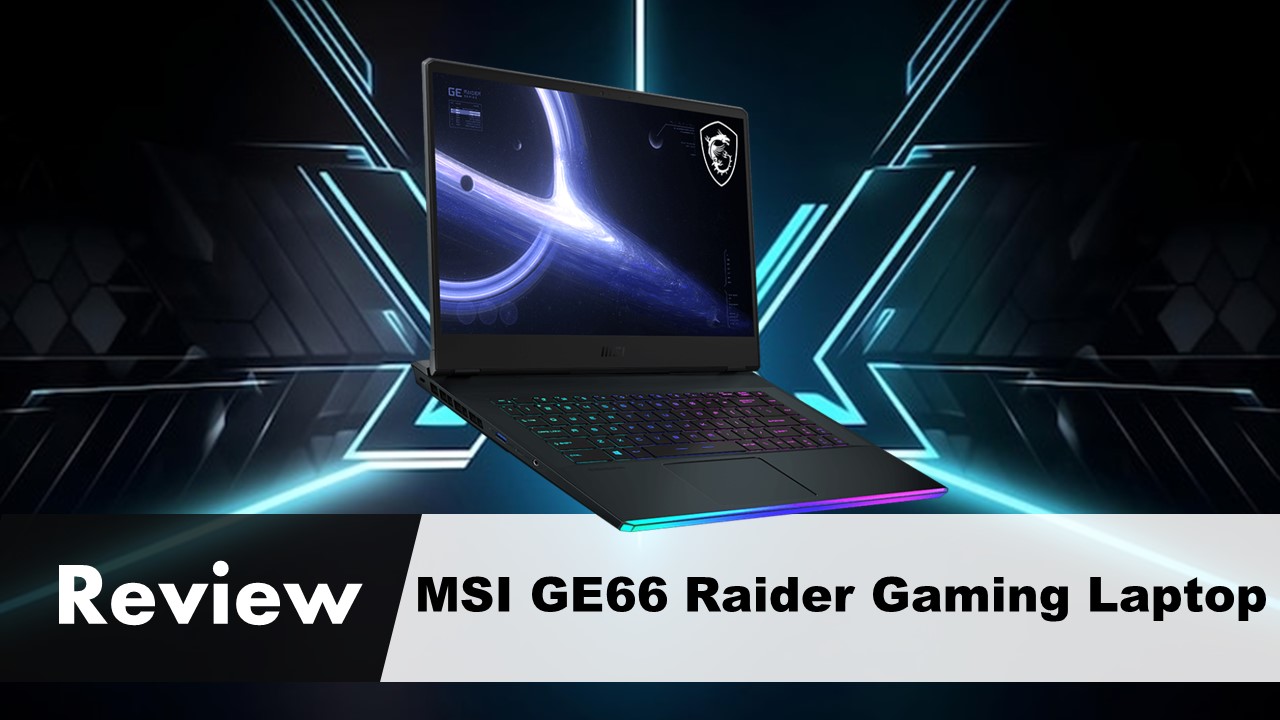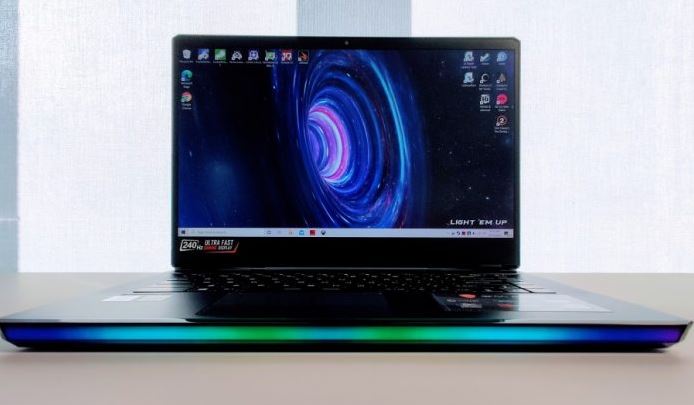MSI offers GE66 Raider laptops as a response to noticeably more expensive laptops from other manufacturers, designed for enjoying the latest gaming experiences. MSI GE66 Raider laptops can be equipped with up to a 10th generation Intel Core i9 processor, Nvidia GeForce RTX 2080 SUPER Max-Q graphics card, and a 300Hz 1080p resolution screen.
A slightly more modest model of the MSI GE66 Raider laptop has arrived for review, featuring an Intel Core i9 processor, Nvidia GeForce RTX 2070 SUPER graphics card, and a 240Hz screen, which could still be slightly above what an average buyer might seek in a laptop. There are quiet suspicions that the more popular version of the GE66 Raider laptop with an i7 processor could be preferable, as the i9 is considered overclockable, but there is little point in attempting overclocking on a laptop already struggling with cooling.
Right off the bat, the MSI GE66 Raider laptop could be one of the favorite laptops, as it looks modest but harbors immense power within the laptop’s dimensions. Could the GE66 Raider be the manufacturer’s flagship? It’s hard to say, as MSI produces a wide range of gaming laptops. But the GE66 Raider is definitely one of those models that could qualify for the flagship title.
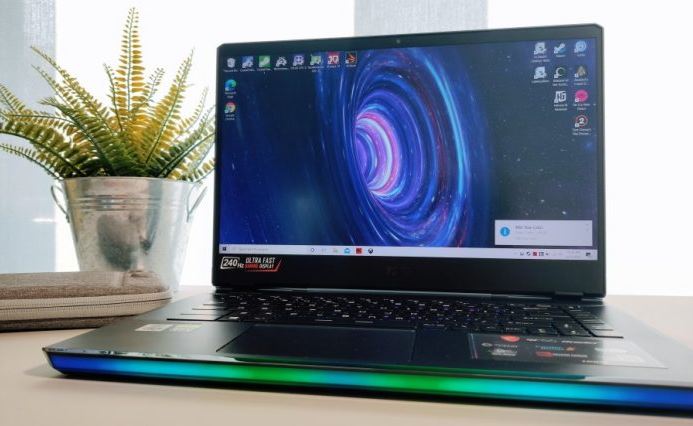
Pros
- The i9 processor performed very well paired with the RTX 2070 SUPER graphics card.
- Fast SSD storage.
- Decent build quality and sturdy hinges.
- RGB LED lighting implemented quite nicely.
Cons
- Really poor sound quality.
- Very loud cooling system.
- Probably will have to raise the back of the laptop about 4-5 cm from the desk to prevent it from sucking against the surface and improve cooling.
Technical Specifications of MSI GE66 Raider
| Feature | Specification |
| Processor | Eight-core Intel Core i9-10980HK (2.4 – 5.3 GHz) |
| Graphics Card | Nvidia GeForce RTX 2070 SUPER, 8192 MB, GDDR6, Optimus (up to GeForce RTX 2080 SUPER) |
| RAM | 16 GB SO-DIMM DDR4-3200 (up to 64 GB) |
| Screen | 15.6 inches, FHD (1920×1080), 240 Hz (up to 300 Hz), IPS-Level, lightly matte |
| SSD | 1 TB NVMe PCIe Gen3, possibility to add another M.2 SSD (Combo slot NVMe PCIe Gen3 / SATA) |
| Ports | 1x RJ45, 1x SD (XC/HC) Card Reader, 1x (4K @ 60Hz) HDMI, 1x Mini-DisplayPort 1.4, 2x Type-A USB3.2 Gen1, 1x Type-A USB3.2 Gen2, 1x Type-C (USB3.2 Gen2 / DP), 1x Type-C USB3.2 Gen2x2, headphone jack |
| Wireless | Killer Wi-Fi 6 802.11 ax Wi-Fi 6 + Bluetooth v5.1 |
| Dimensions | 358 x 267 x 23.4 mm |
| Weight | 2.38 kg, power adapter approx. 1000 g |
| Battery | 99.9 Wh |
| Additional | Illuminated RGB LED keys, RGB LED strip behind the glass prism on the front of the computer |
| Software | Dragon Center, SteelSeries Engine |
| Price | Around $2000 to $2900 |
Techincal Specification Source: MSI
Design and Built

The MSI GE66 Raider is definitely not the most flashy-looking gaming laptop, which, at least from the user’s perspective, seems more appealing than some overly illuminated models that siphon half of the power supply for RGB lighting. Of course, there might be some exaggeration here. The MSI GE66 Raider has also acquired a couple of illuminated details (keyboard and substantial Aurora RGB LED strip on the front of the computer), but these accents are not annoying; even the user didn’t want to hide them. In front of the Aurora RGB LED, there is a substantial glass prism that significantly enhances and intensifies this lighting effect.
At first glance, it’s evident that the laptop is designed for durability. The hinges are robust, firmly attached to the chassis. It’s hard to comment on how the hinges of the MSI GE66 Raider will behave over a longer period, but for a new laptop, the hinges seem excellent.

Ports and Connectivity
Similarly, the connection ports of the MSI GE66 Raider are quite sensibly positioned – there are USB ports on the sides, and at the rear, there are ports for video, LAN, and power. Not all desires and dreams have been fulfilled, only the desire for a Thunderbolt connection remains unfulfilled, but one can probably do without it. However, the MSI GE66 Raider offers a glimpse of the future with its Type-C USB3.2 Gen2x2, which is a super-fast 20 Gbps connection. HDMI and Mini-DisplayPort ports are also available, and such a variety of connection ports is not a standard solution either.

Cooling System
Three words about the cooling system. Here, it must be said that with the MSI GE66 Raider, a somewhat good and partially not so good job has been done simultaneously. The cooling system seems powerful; air is taken from the bottom of the laptop and then blown out on both sides. So, most likely, hot air will blow towards the user’s right hand. The other not so good news is that the cooling system is mercilessly loud at maximum capacity.
To get the most out of the MSI GE66 Raider’s cooling, it will be necessary to support the back of the computer somehow (using some risers, a laptop stand, or something similar), because otherwise, it cannot draw in a sufficient amount of air from below. There is even a feeling that the MSI GE66 Raider’s cooling system sucks it up from the table surface. The MSI GE66 Raider is indeed raised on quite high risers, but they are not enough.
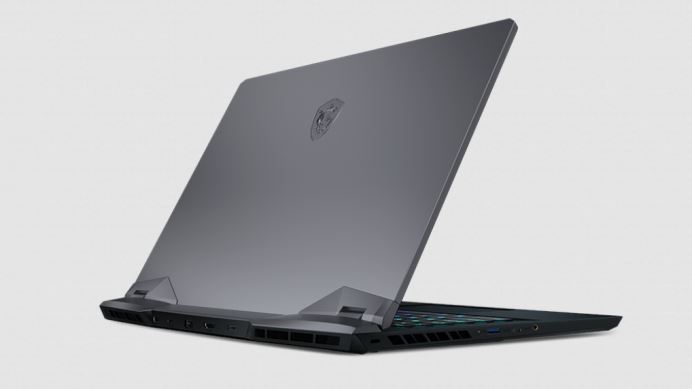
The MSI GE66 Raider received for reviewis equipped with an incredibly powerful Intel Core i9 processor, and it must be acknowledged that the computer cannot effectively cool it, but this is neither the first nor the last processor that laptops cannot effectively cool. Noticeable heating occurs during gaming and performance review, leading to thermal throttling, or power reduction.

The MSI GE66 Raider’s power supply unit is quite substantial; it is perhaps the largest and heaviest power supply unit ever seen for gaming laptops. The luggage scale shows a weight of the power supply unit closer to 1 kg, rather than 900 grams. It should also be noted that the length of the power supply unit’s cable is rather thoughtless because the brick itself may need to be held on the table just because the length of the cable between the wall socket and the unit is longer than the cable between the unit and the computer. The cable length between the computer and the power supply unit is 110 cm.
Measure and calculate it yourself, but for the user’s desk and device layout (for example, an atypical item like a monitor stands on the desk), about 15 centimeters of cable were lacking.

For a laptop of this size and price, the user definitely expected noticeably better speakers. The MSI GE66 Raider cannot boast about them. The speakers cannot really be heard when the cooling system’s maximum power is activated.
Keyboard and Touchpad of MSI GE66 Raider
Although the MSI GE66 Raider has supposedly received a high-quality SteelSeries keyboard with RGB lighting, it doesn’t really appeal to the user. There seems to be an attempt to incorporate the resistance and feel of mechanical keyboards into the laptop’s keyboard, but it hasn’t been entirely successful. The MSI GE66 Raider’s keyboard wouldn’t be considered a total failure, but given its price and the SteelSeries label, the user expected more. The keys on the keyboard are rather large, which may require some adjustment.
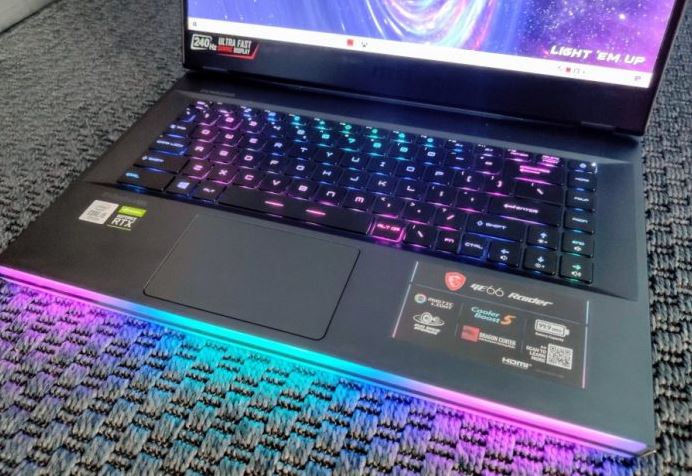
The keyboard is accompanied by a slightly chaotic and difficult-to-understand SteelSeries Engine application. For example, in this program, there are both Undo and Revert buttons, each of which reverts its own settings. Simply turning on or off the RGB LED lighting requires selecting Effects from the so-called drop-down list, which could have been more prominently and distinctly highlighted.
The MSI GE66 Raider touchpad is probably best described as average. It’s neither too big nor too small. Individual buttons are not separated.
MSI GE66 Raider Display
The MSI GE66 Raider features a 15.6-inch 1920 x 1080-pixel resolution screen, which is lightly matte and has a sticker under the screen indicating a 240Hz refresh rate. In the more expensive configuration of the MSI GE66 Raider, it is also equipped with a 300Hz screen. It is also promised that the MSI GE66 Raider screen reaches up to 300 cd/m2 brightness, which is quite acceptable for indoor use.
The bezels around the MSI GE66 Raider screen are quite wide, which may be forgivable for a gaming laptop, but certainly not ideal.
Using the EIZO Monitor Test, it was observed that the MSI GE66 Raider does not have significant backlight bleeding, overall, the screen performs almost excellently.
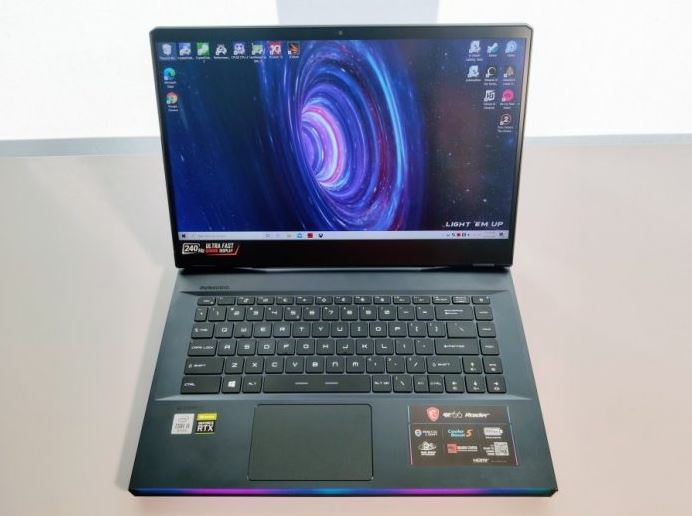
A special mini application takes care of the MSI GE66 Raider screen and image, switching screen colors and brightness in game mode when a game is launched.
MSI GE66 Raider Performance
In our performance review arsenal, the MSI GE66 Raider is the first laptop with a GeForce RTX 2070 SUPER graphics card; this is a fairly new version of the GeForce RTX 2070 SUPER graphics card for laptops (we even had to update some performance tests specifically). The MSI GE66 Raider is also equipped with a very powerful Intel Core i9-10980HK processor and 16 GB DDR4 RAM. The computer is also equipped with a 1 TB NVMe SSD.
Right from the start, it should be noted that even in simple performance tests, the Intel Core i9-10980HK processor had trouble reaching around 98…99 degrees, and consequently, thermal throttling appeared. So, the processor is not effectively cooled enough, and thermal throttling appeared even with not very serious synthetic performance tests. It should be noted, however, that thermal throttling reduces performance by approximately 3-4%.
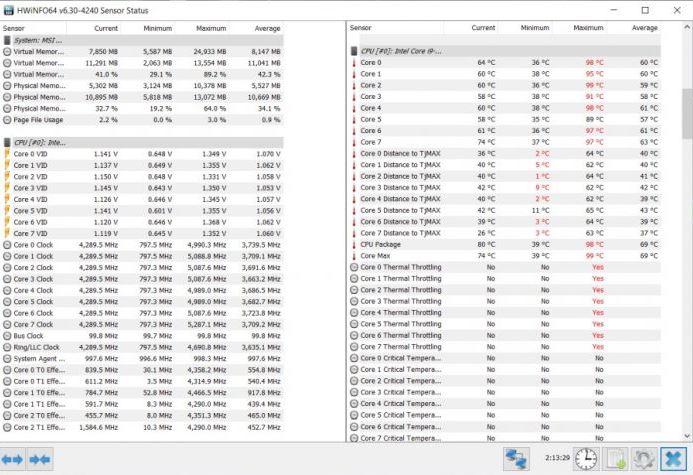
The MSI GE66 Raider cooling cannot be called weak; the computer manages to effectively cool itself at least from the outside (the top part of the keyboard), so there is no noticeable warmth felt by hand. During gaming, you probably won’t keep the MSI GE66 Raider on your lap; however, the bottom does get quite hot, so it’s necessary to leave a gap for the computer to draw in air for cooling. As mentioned earlier, the cooling is almost unbearably loud. It could be the loudest laptop cooling heard, but we don’t have quantitative measurements.
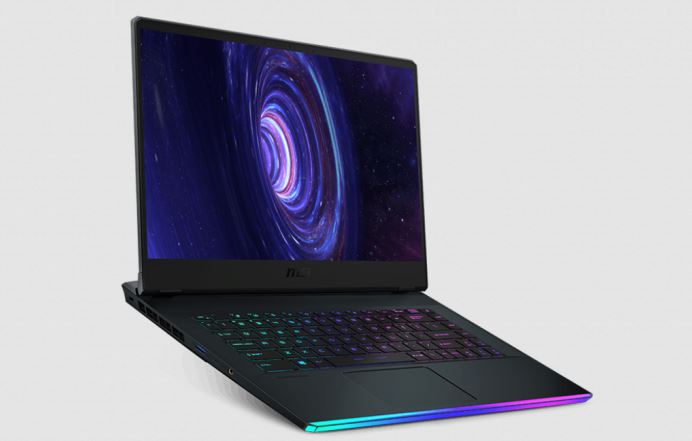
The laptop is equipped with Western Digital PC SN730 NVMe SSD memory, known for its fast operation (according to the manufacturer’s data, up to 3400 MB/s read speed). Once again, the memory shows a quite good 2965 MB/s read speed and a very high 2629 MB/s write speed in the AS SSD performance test, while CrystalDiskMark is more generous with 3395 MB/s read speed and 3077 MB/s write speed.
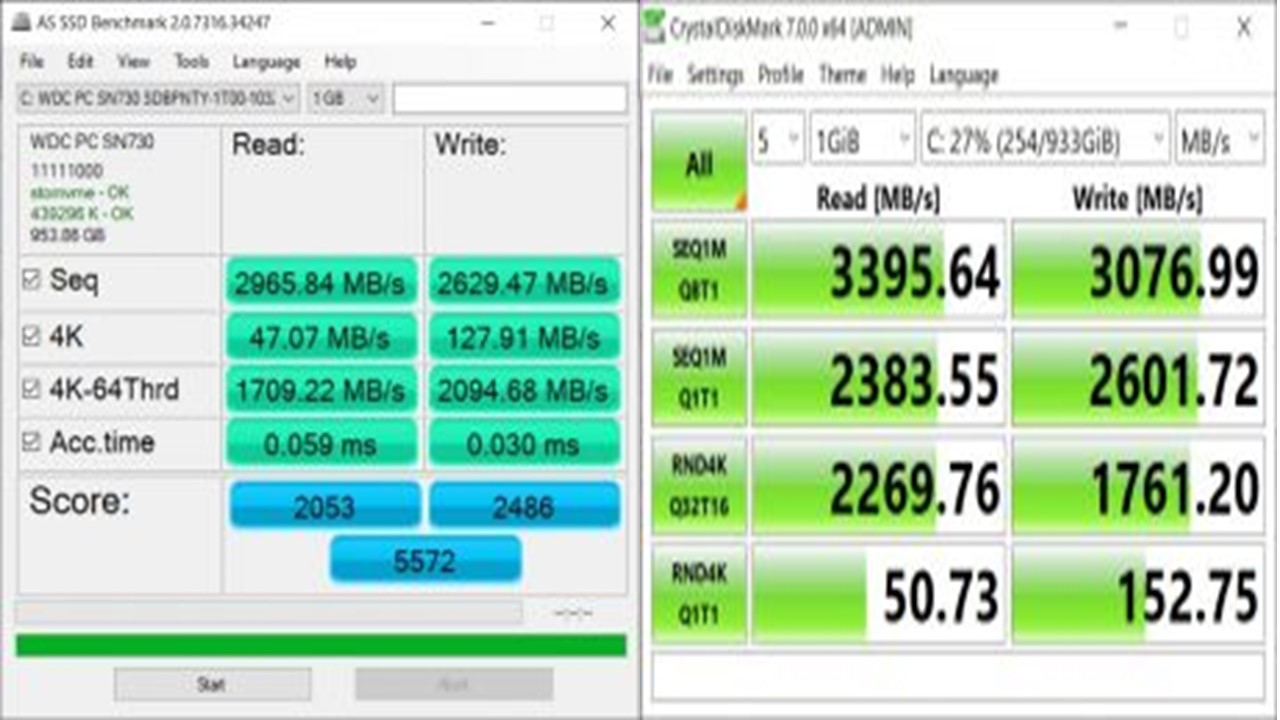
In the Passmark Performance Test 9.0 test, this laptop achieved a more than acceptable score of 6374 points, which easily surpasses the MSI GS65 Stealth Thin (Review) (5369.2 points), ASUS ROG Strix G (Review) (4653.7 points), ASUS ROG Zephyrus G14 (5056 points), ASUS ROG ZEPHYRUS S GX701 (5646.2 points), and even the recently reviewed ASUS TUF Gaming A15 (5720 points). In this test, the best result from the laptops we have is the Lenovo ThinkPad X1 Extreme with 7809.2 points, but that’s a completely different class of device.
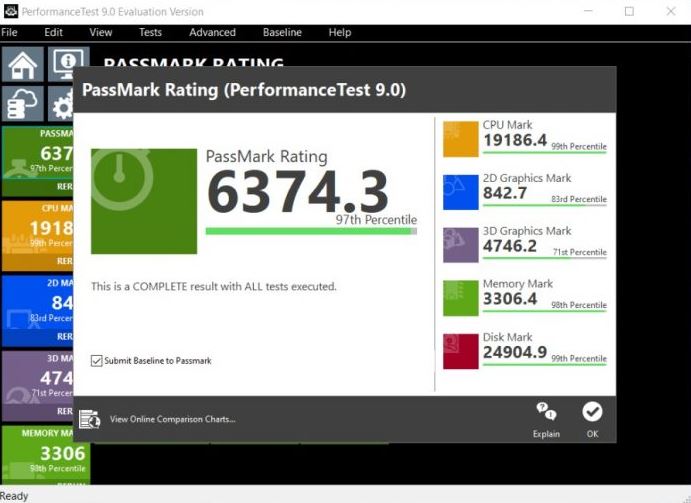
Other Performance Test Data
- PCMark 10: 5867
- 3DMark Fire Strike Ultra: 5312
- 3DMark Time Spy: 8340
- 3DMark Sky Diver: 47,012
- Cinebench R20: 3796
Commenting further on the synthetic performance test results when compared to other previously seen laptops. The PCMark 10 (5867 points) result is in first place out of approximately 30 tested laptops. Fire Strike Ultra again has the best result, and Time Spy is the second-best result behind the ASUS Zephyrus S, which had a GeForce RTX 2080 Max-Q and 24 GB RAM.
In Cinebench, which is a test of processor capabilities, the 3796 points lag behind only the AMD Ryzen 7 4800H processor, which we saw in the ASUS A15 model. So overall, it can be evaluated that the significant contribution in the performance tests comes from the graphics card, and the new i9 processor is not at all lacking.
In the built-in performance tests of games, the MSI GE66 Raider showed the following results:
- Assassin’s Creed Odyssey: (1080p Ultra) 67 frames per second.
- Far Cry New Dawn: (1080p Ultra) 98 frames per second.
- Division 2: (1080p Ultra) 83 frames per second.
- Shadow of the Tomb Raider: (1080p Ultra, RTX on, DLSS on) 73 frames per second.

In the built-in performance tests, the MSI GE66 Raider is definitely one of the most powerful laptops seen. Perhaps even the most powerful, as we only recently began conducting built-in game tests and collecting data for them.
The recently reviewed TUF Gaming A15, aimed at the lower end of the gaming spectrum with a GeForce RTX 2060 and the freshly minted eight-core AMD Ryzen 7 4800H processor, showed significantly lower results (Assassin’s Creed 47, Far Cry 77, and Division 2 – 59 frames per second respectively).
The MSI GE66 Raider finally has a screen worthy of 240 Hz, and perhaps even 300 Hz. In less demanding games or with toned-down visual effects, the frame rate could indeed exceed 200 frames per second.
In this section, the Killer Wi-Fi 6 wireless network card is also mentioned, which finally knows how to stress the available 3×3 antenna wireless routers at home. I know that my laptop with a 2×2 Intel Wi-Fi 6 wireless network card can reach up to about 300 Mbps (Wi-Fi 5 network), while the MSI GE66 Raider with the Killer wireless network card in a Wi-Fi 5 network was able to exceed 360 Mbps (45 MB/s). Unfortunately, I didn’t have anything else at hand (NAS or any other sensible network device), and I haven’t yet reached my Wi-Fi 6 router, which could provide even higher speeds on the home network.
For some reason, this time the laptop crashed five times in a row in the LatencyMon test within the first two minutes. Everything was done correctly for the test – the laptop was not in any overclocking mode, and Wi-Fi was turned off.
Battery and Software of MSI GE66 Raider
The MSI GE66 Raider has the largest battery ever installed in a laptop. With a 99.9 Wh battery, the MSI GE66 Raider is definitely the leader among the laptops we have reviewed. It should be noted that the MSI GE66 Raider houses a powerful i9 soul, accompanied by a powerful graphics card. So, we won’t conquer any longevity peaks this time.
With one charge, reduced screen brightness, and Wi-Fi enabled, the MSI GE66 Raider will last close to 5 hours in office mode. In gaming mode without a power cord, the MSI GE66 Raider doesn’t offer its full power, but gaming won’t last more than an hour and 20 minutes.
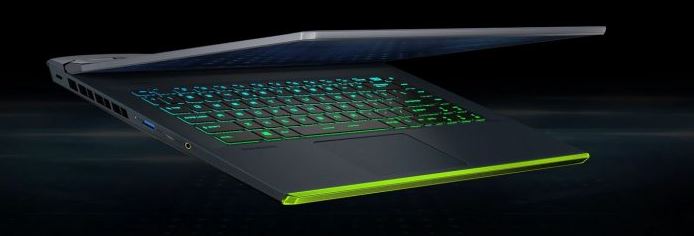
I like that the MSI Dragon Center software also allows for the setting of three different battery usage modes. If the MSI GE66 Raider is used constantly with a power cord, battery preservation is activated, preventing it from being charged above 60%. There is also a balanced mode (80%) and a full battery mode (100%).
Conclusion
During the review process, at least three different configurations of the MSI GE66 Raider are available in online stores. The cheapest configuration at €2099 includes an Intel Core i7-10875H, GeForce RTX 2070, 240Hz screen, 16GB RAM, and 1TB SSD. However, it must be noted that the higher the refresh rate, the heavier the load it places directly on the processor rather than the graphics card.
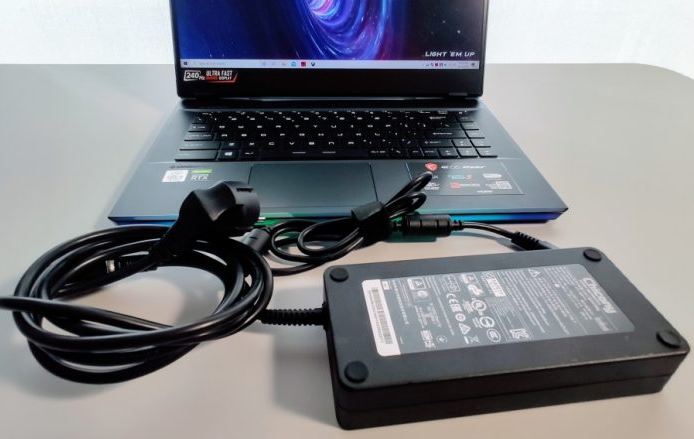
For review, the second cheapest version was received at $2499, featuring an Intel Core i9-10980HK, GeForce RTX 2070 SUPER, 16GB RAM, and 1TB SSD. The next step up is the i7 processor paired with GeForce RTX 2080 SUPER at €2999.
The MSI GE66 Raider is truly a laptop that could easily replace a desktop and a corresponding monitor with a high refresh rate without much effort in terms of performance. MSI GE66 Raider buyers not only get power but also a wide range of connectivity options and surprisingly fast Killer Wi-Fi 6 wireless card. The MSI GE66 Raider has modest appearance and respectable build quality.
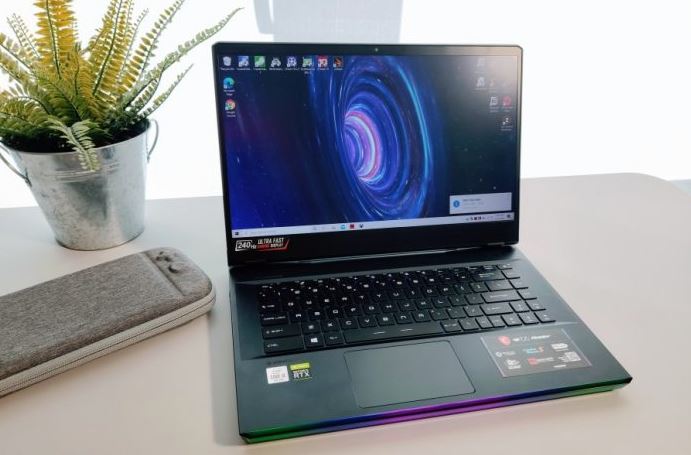
As for the downsides, the loud but not ideal cooling system must be mentioned, which unfortunately allows processor temperatures to rise high. However, the MSI GE66 Raider with the Core i9-10980HK held up well against high processor temperatures for quite some time; the cooling system is unnoticeable during everyday office use and movie watching. Among the downsides, the weak sound and the slight chaos caused by the many accompanying applications should also be mentioned.

